



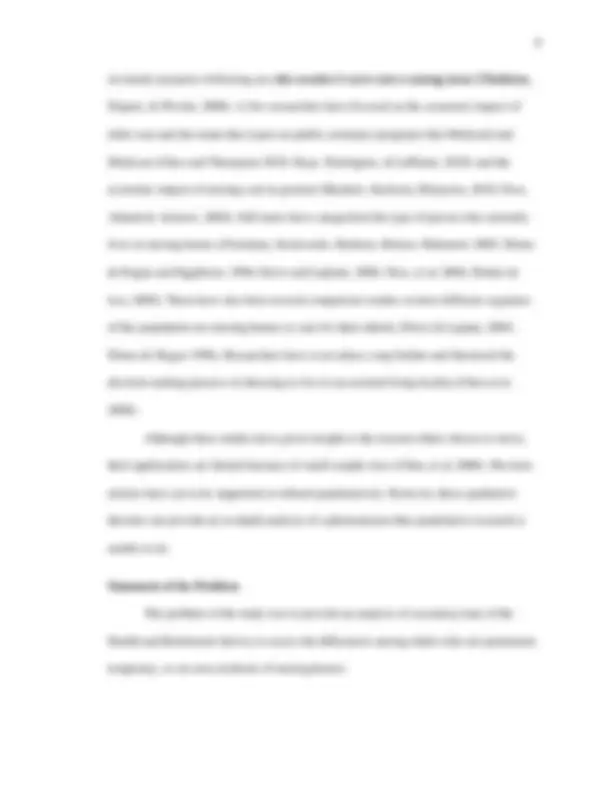
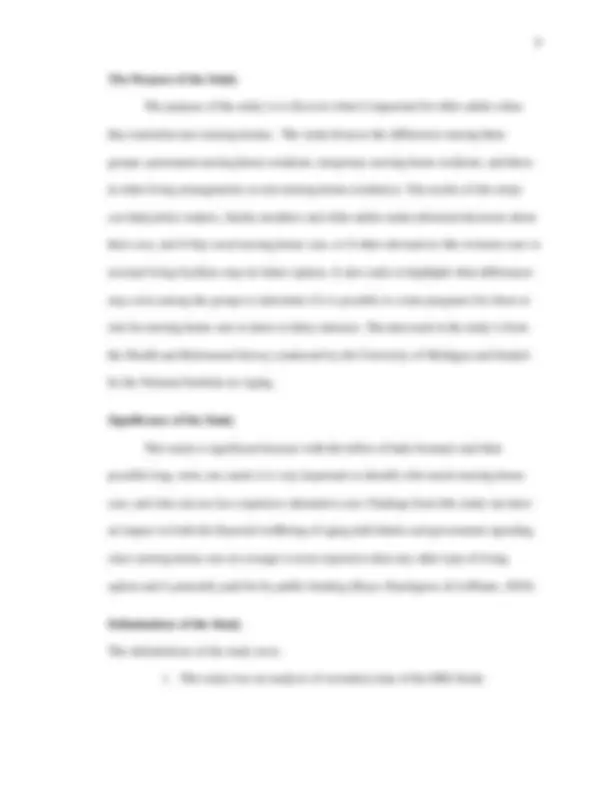
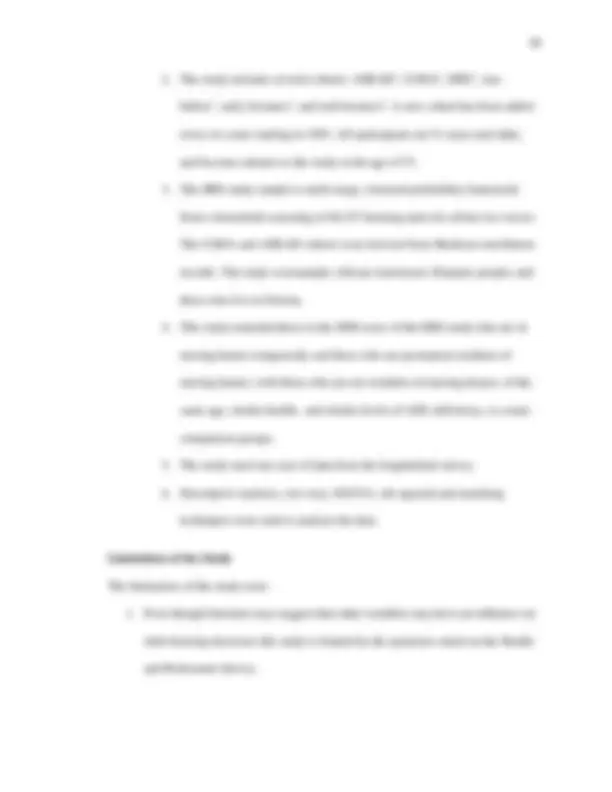
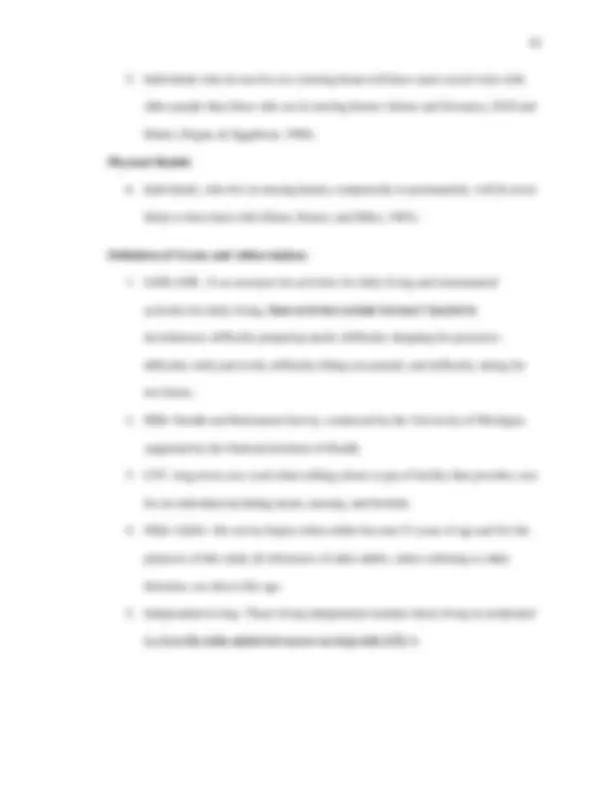
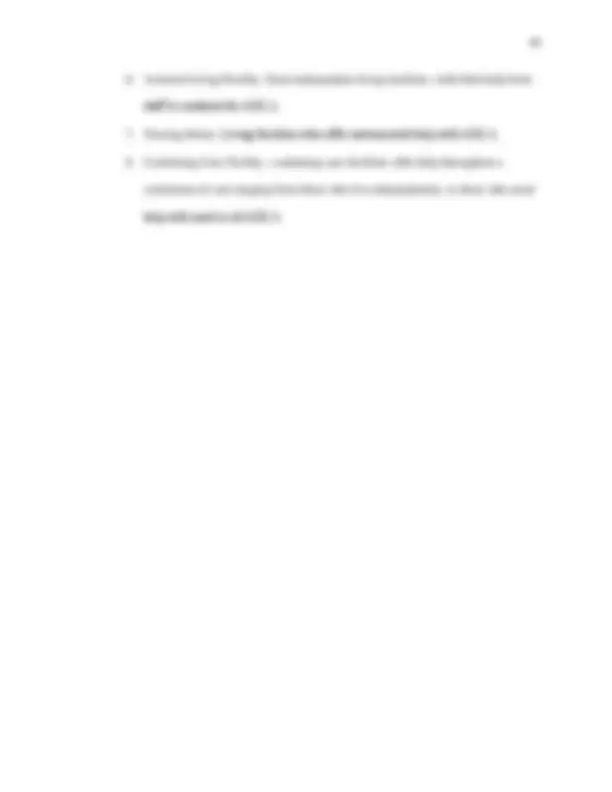
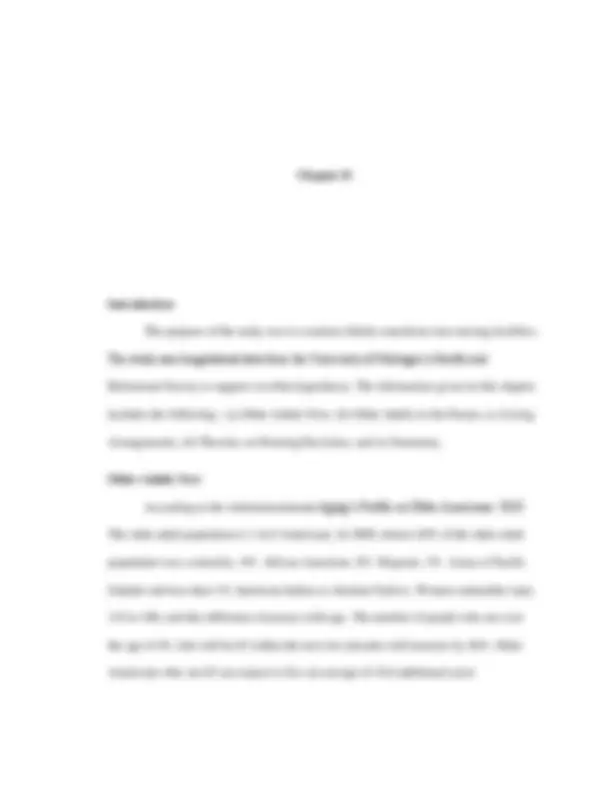
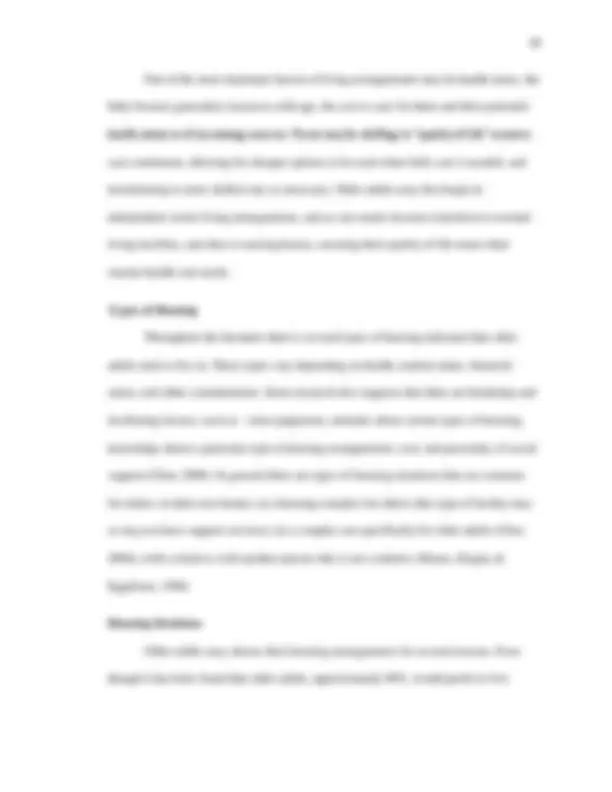
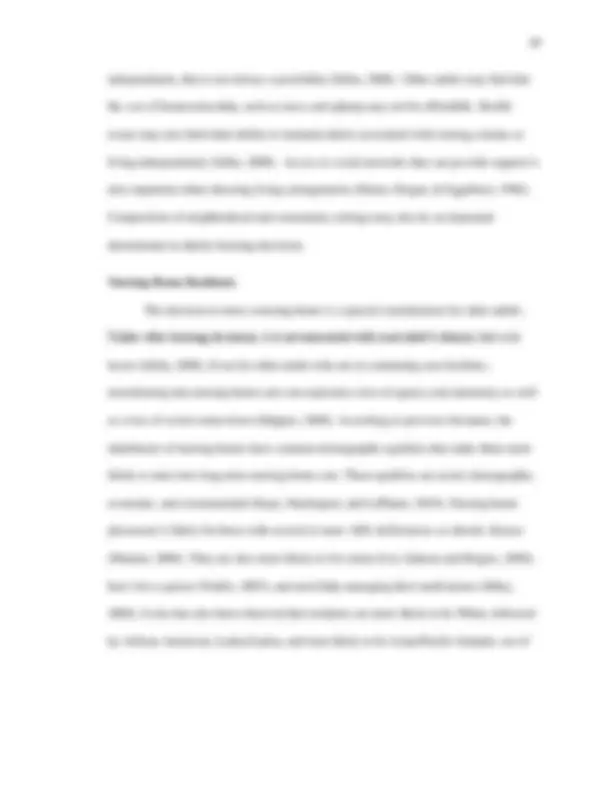
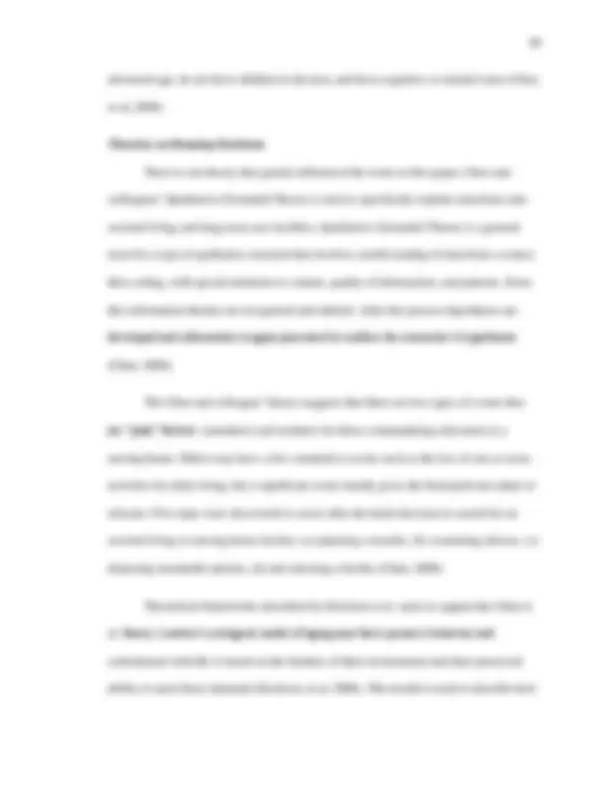


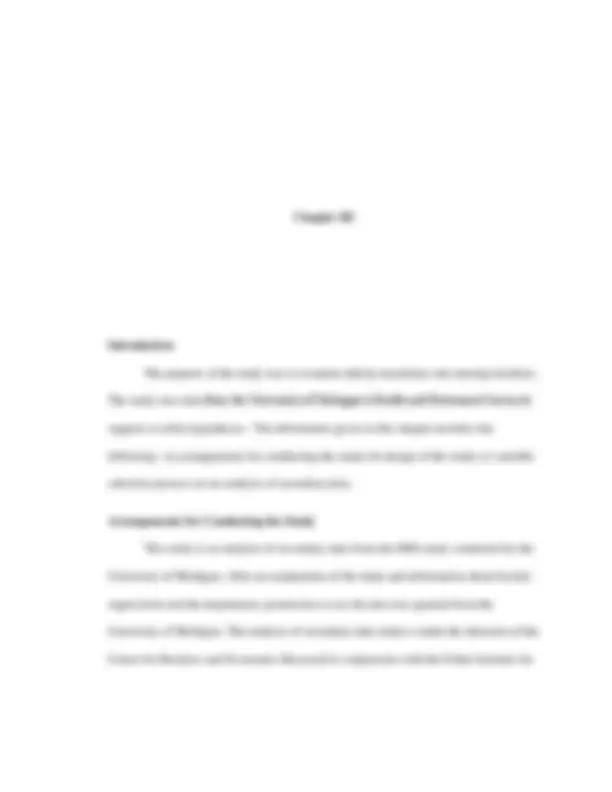
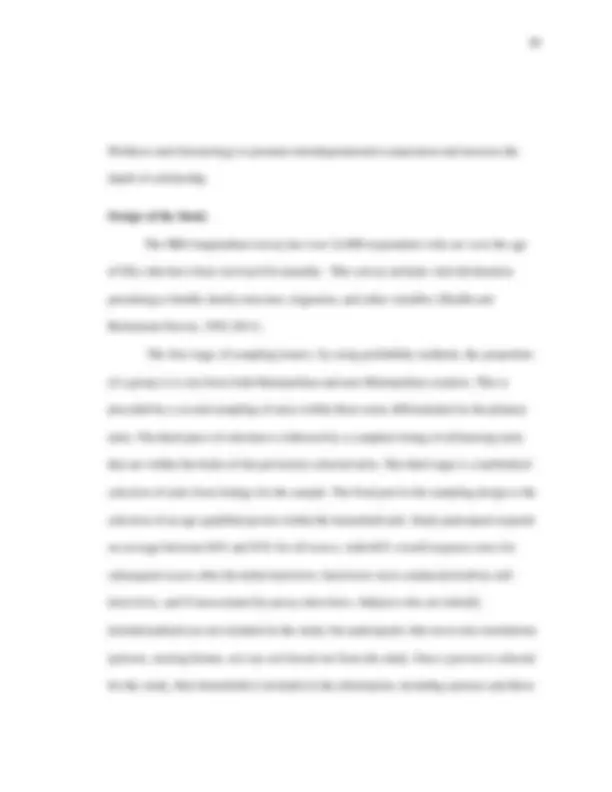

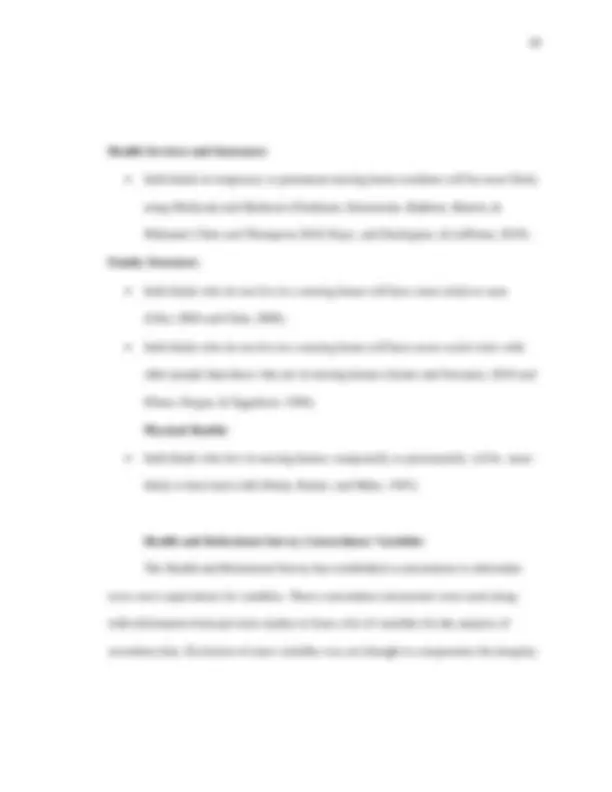
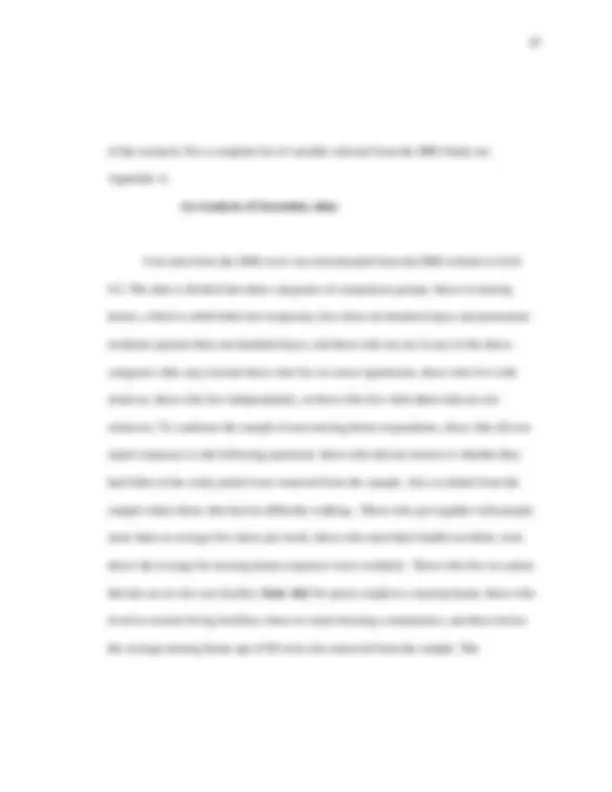

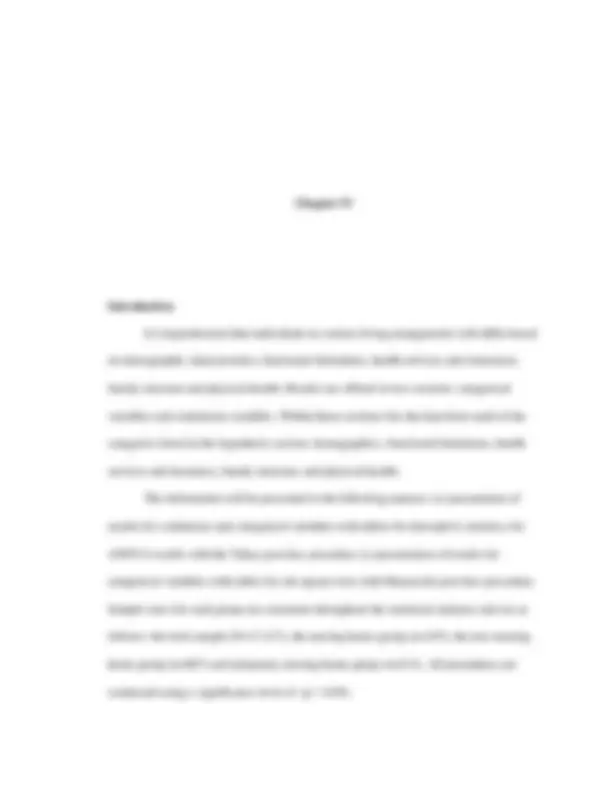
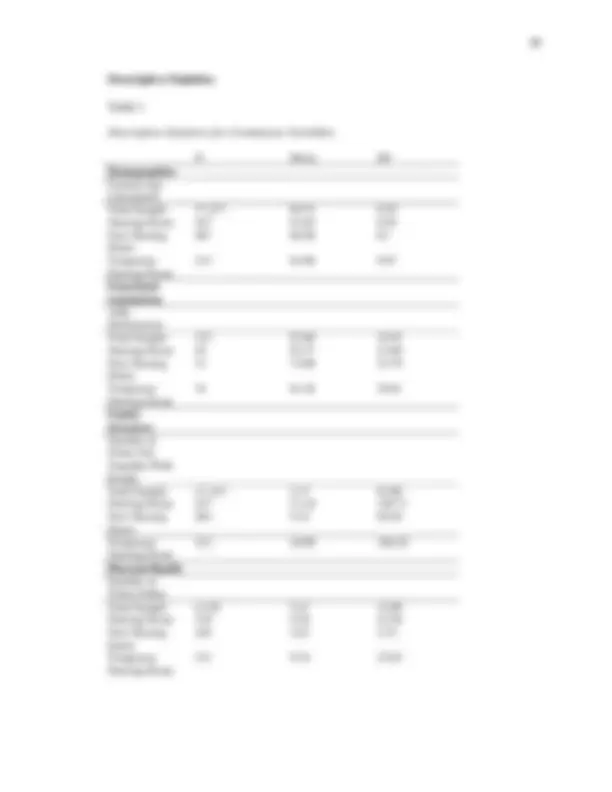
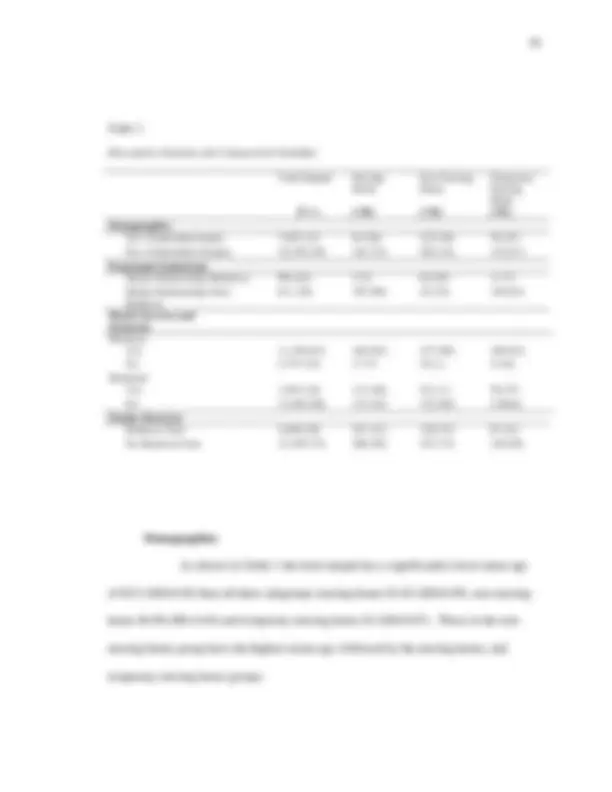
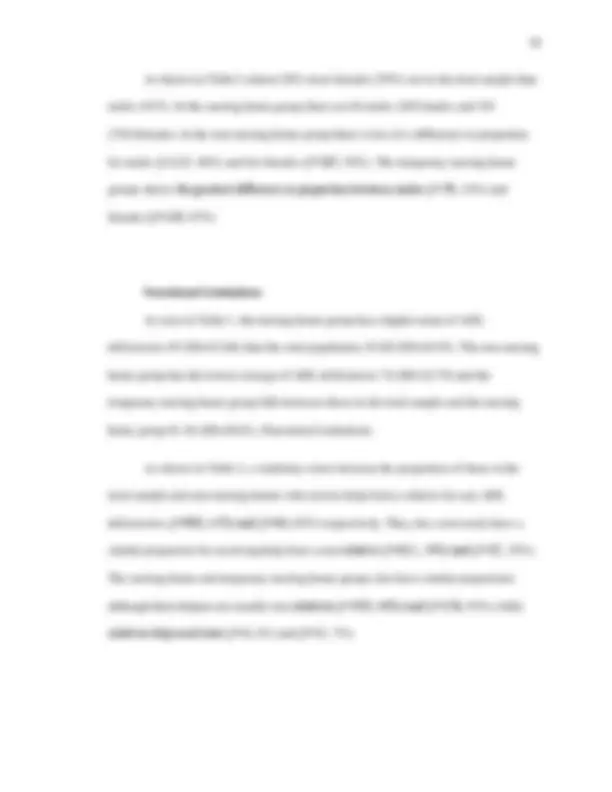
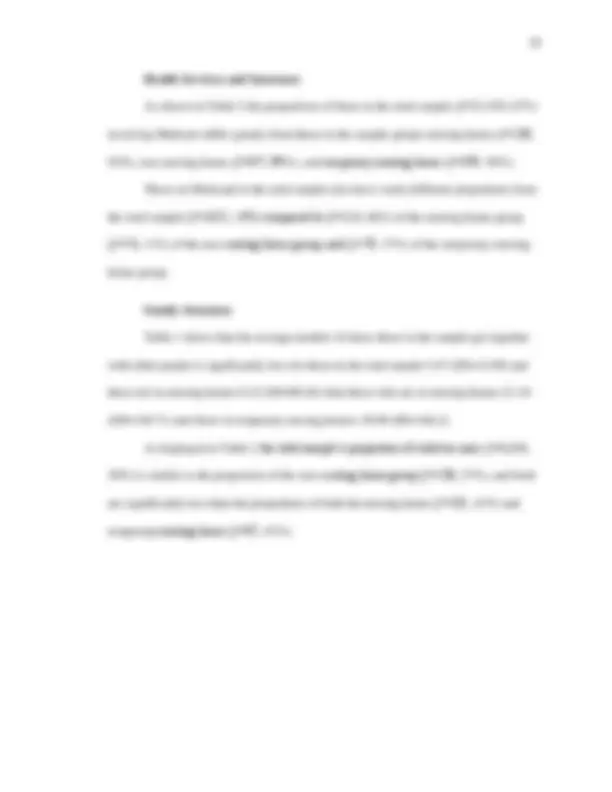
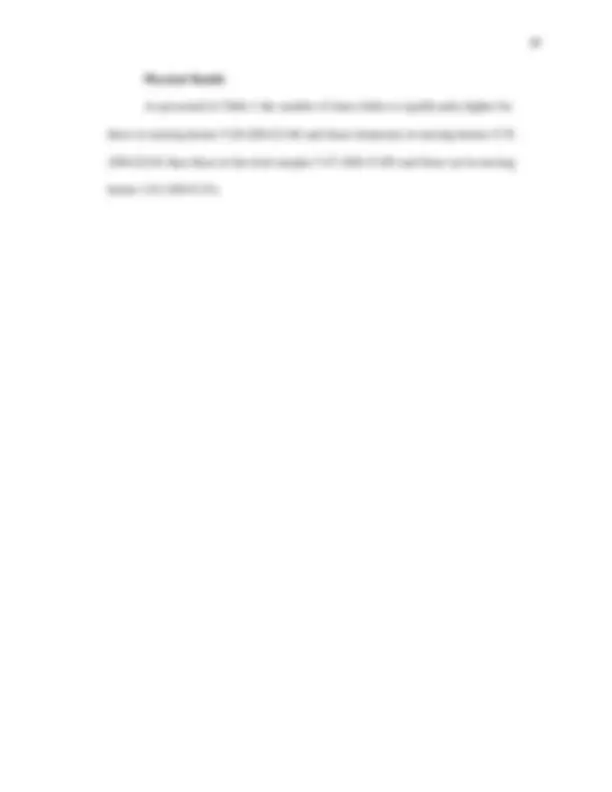
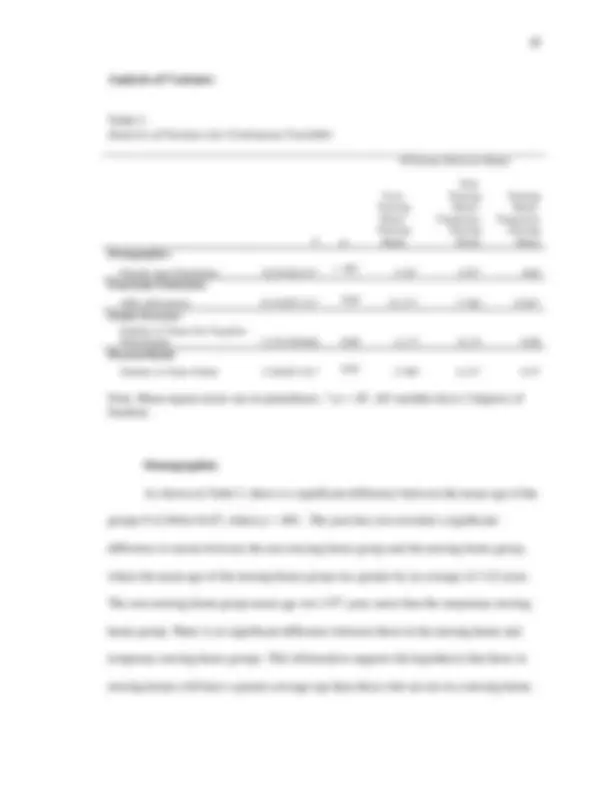
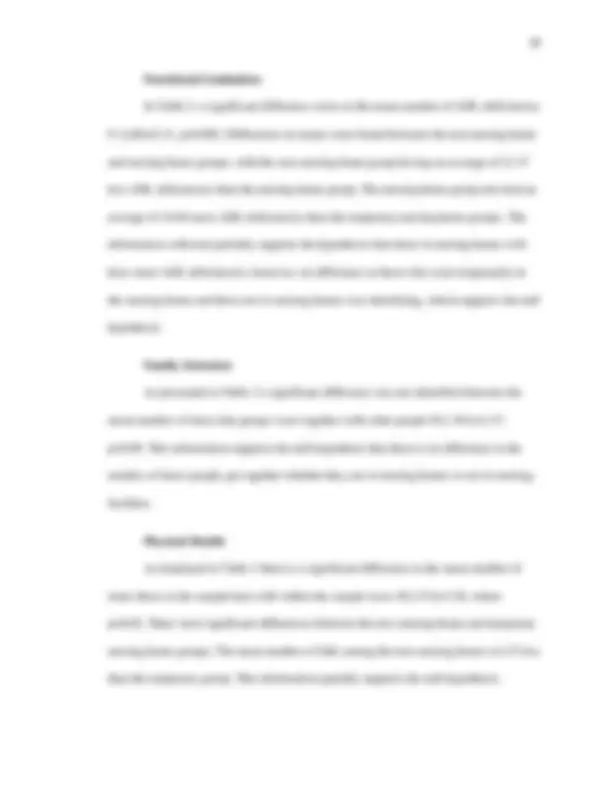

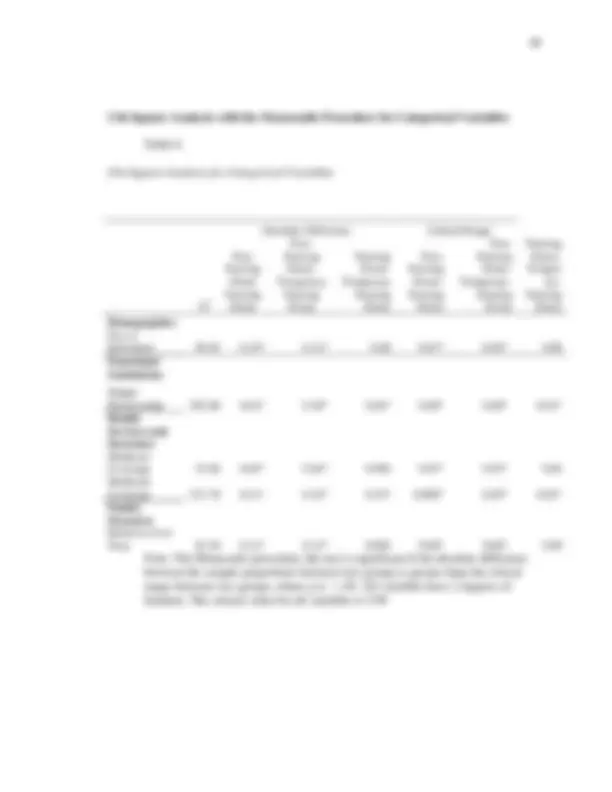
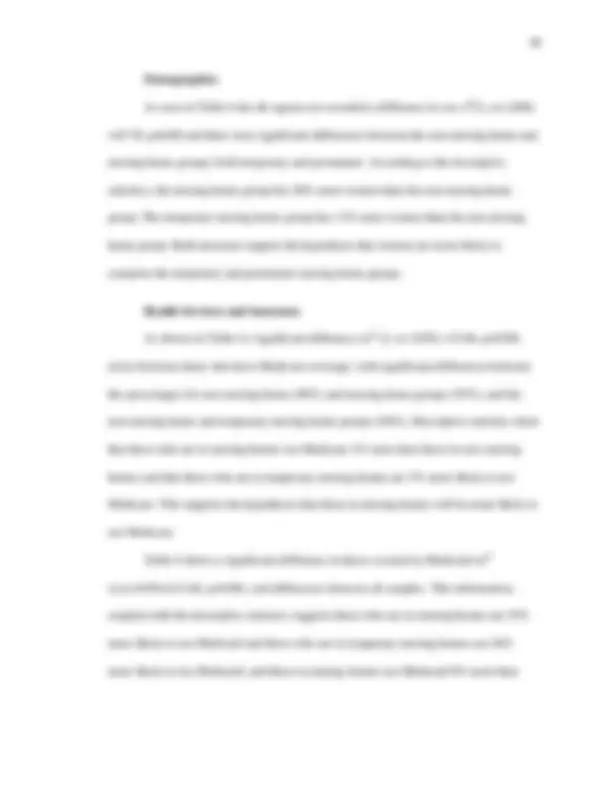
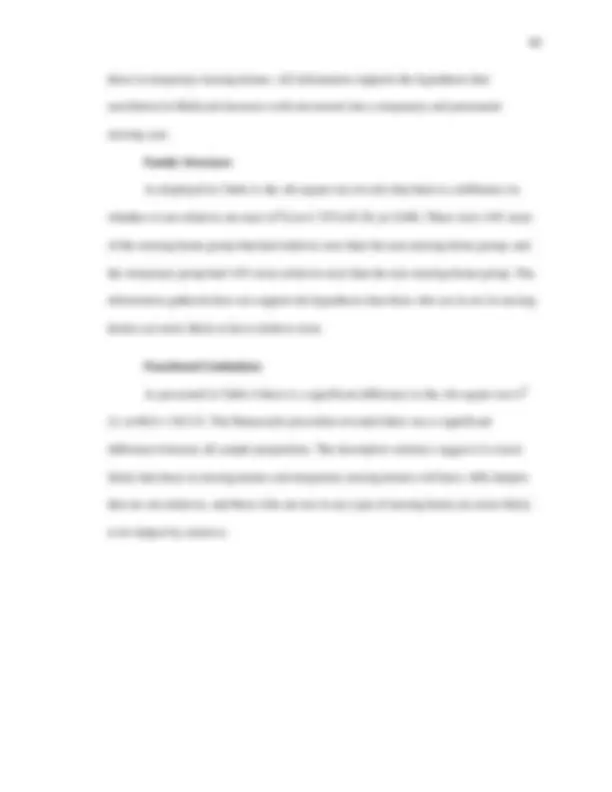
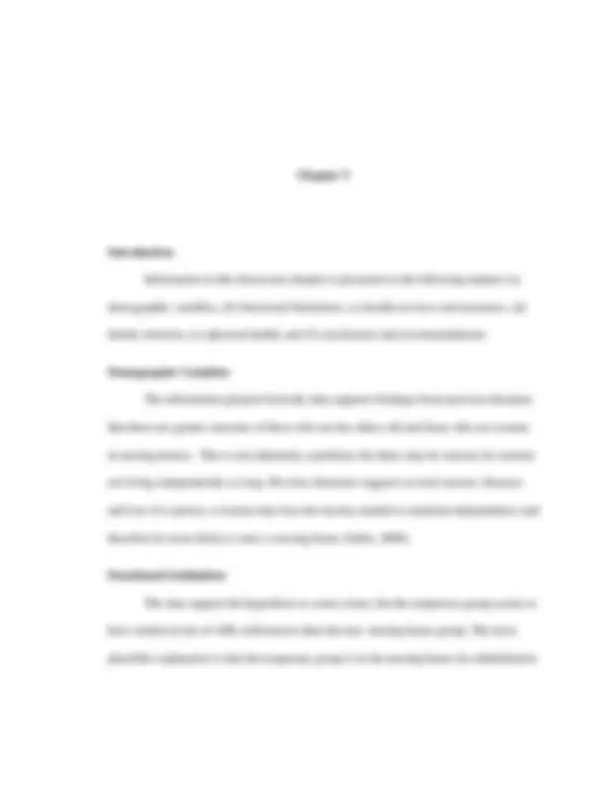
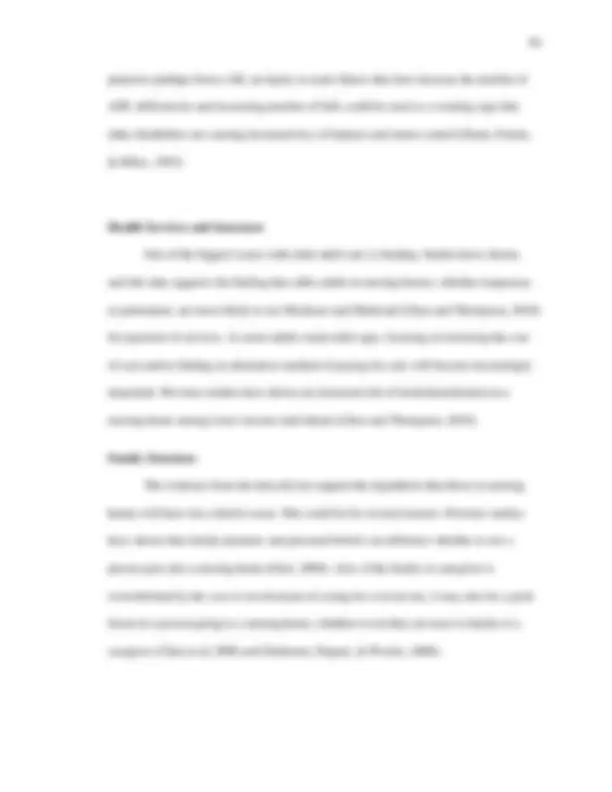
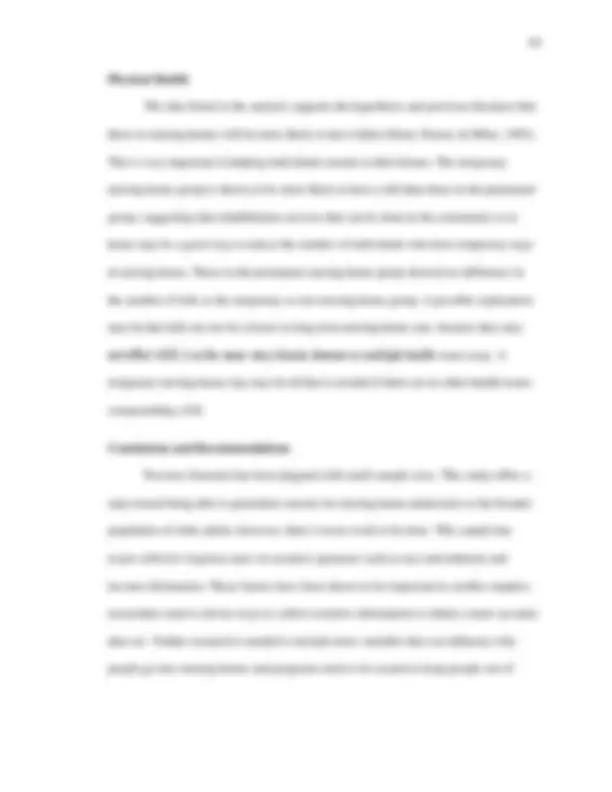

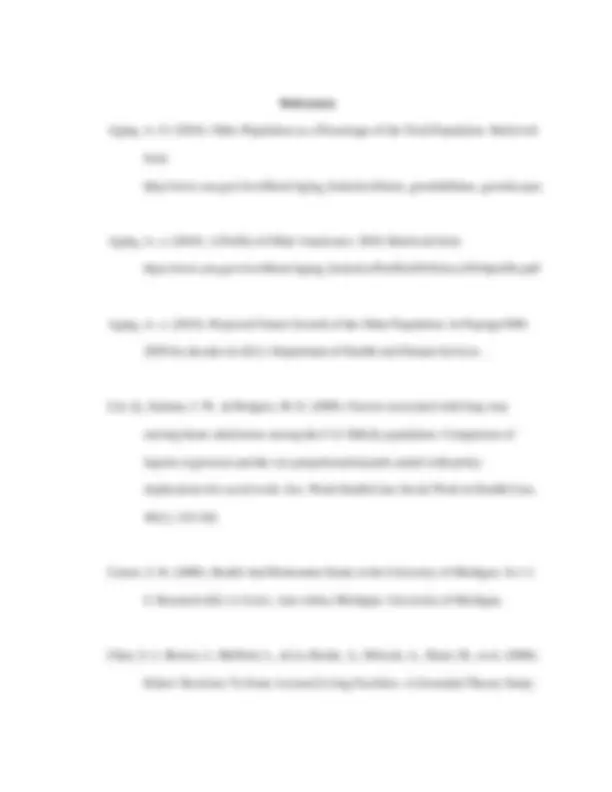



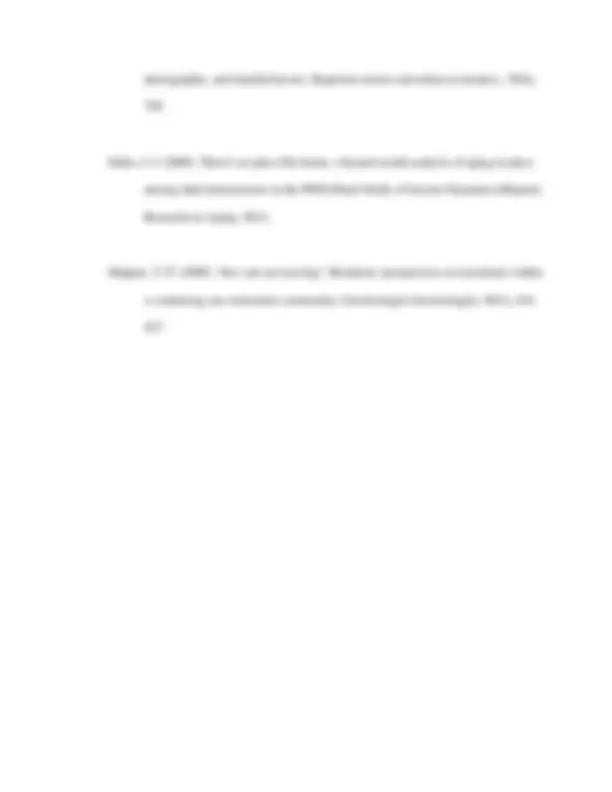

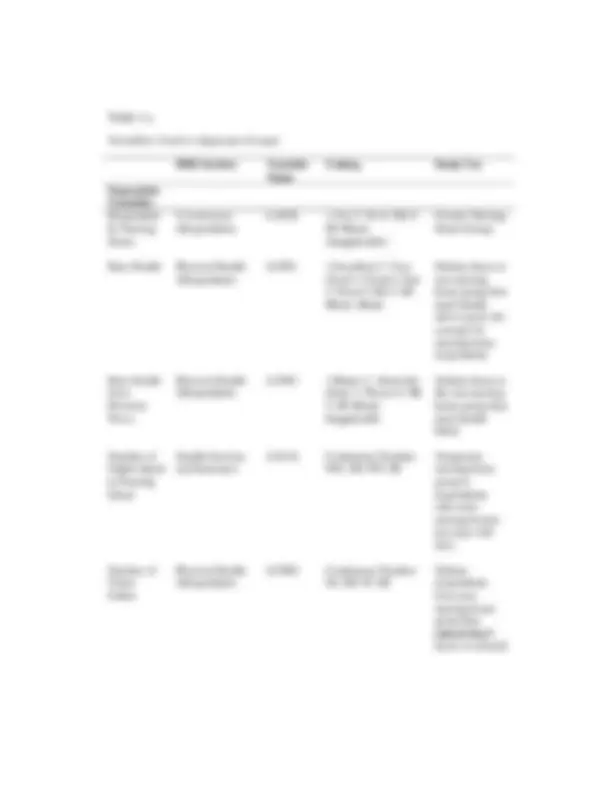


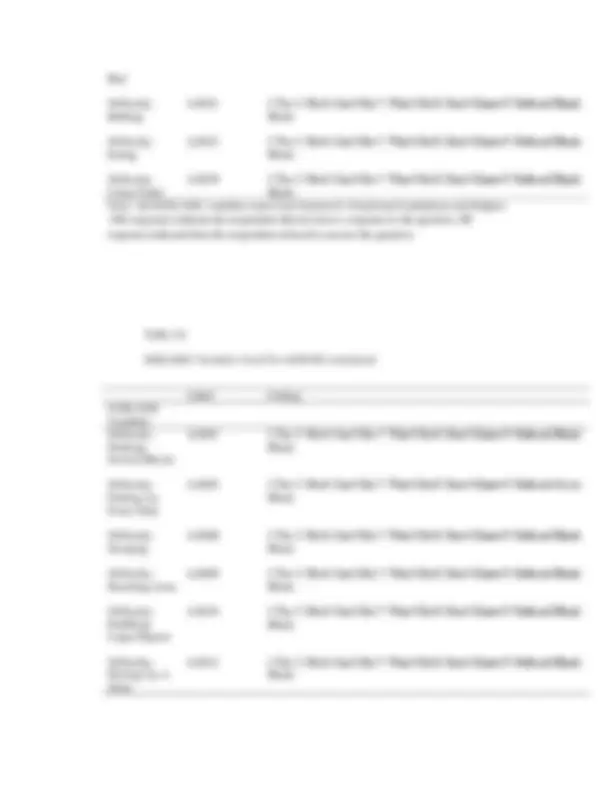




Study with the several resources on Docsity

Earn points by helping other students or get them with a premium plan


Prepare for your exams
Study with the several resources on Docsity

Earn points to download
Earn points by helping other students or get them with a premium plan
Community
Ask the community for help and clear up your study doubts
Discover the best universities in your country according to Docsity users
Free resources
Download our free guides on studying techniques, anxiety management strategies, and thesis advice from Docsity tutors
An analysis of secondary data from the Health and Retirement Survey to compare older adults in nursing homes with those in other living arrangements. The study examines functional limitations, health services and insurance, and demographics to help inform decisions about care options for older adults and policy makers. The document also discusses the differences in ADL deficiencies, social visits, falls, and Medicare and Medicaid usage between permanent and temporary nursing home residents and those not in nursing homes.
Typology: Study notes
1 / 56

This page cannot be seen from the preview
Don't miss anything!

















































To everyone who has given me an encouraging word, to the author and finisher of my faith, thank you for keeping me.
To my thesis committee: My chair, Kathy Segrist, and committee members: Jane Ellery and Dagney Faulk thank you so much. My thanks also go to the Center for Business and Economic Research for their true hospitality and treating me like one of their own. It was a pleasure.
Thank you to all the staff and students at Fisher Institute for Wellness and Gerontology and especially those at the Community Center for Vital Aging for your support.
To my wonderful family and friends you all have been the best, you‟re encouraging, flexible and kind. I could not ask for better.
As people age changes in the ability to perform necessary tasks in their homes arise (Erickson, Krout, Ewen, & Robison, 2006). Although it has been shown that many older adults would choose to live independently, they may eventually need long-term care (Choi, 2004). In data from 2006, an estimated 900,000 people lived in assisted living accommodations (Chen, et al., 2008). With the increase in the number of individuals in the older population, the number living in assisted living will also likely increase. Older adults have many options when it comes to residential placement. They may choose to live: their current homes, in a senior independent living facility, in non- senior population housing, with a relative, with a child, in an assisted living facility, or in a nursing home (Choi, 2004). The choice of living space for elders may be dependent on a multitude of factors, some including cultural perceptions, family arrangements, and economic factors (Choi, 2004). There is a wealth of data on the demographics of those in nursing homes and assisted living facilities. Several studies have found that those at risk for entrance into a nursing home are more likely to be Caucasian, are of an advanced age, have specific types of chronic illness, have limitations on their ability to perform daily functions, have mental or cognitive decline, and live alone (Choi, 2004). Poverty also may play a key role in whether a person moves into a nursing home. Those unable to afford in-home care may be moved into nursing homes and will use Medicaid as the primary source of payment (Ness, et al., 2004). Previous studies have focused on the impact of relocation from several points of assessment including psychological, social, economic, and demographic. Researchers have studied the impact on mental health and quality of life (Kelley-Gillespie & Farley, 2007; James and Sweaney 2010). There also have been reflections on the repercussions
on family dynamics following an elder member‟s move into a nursing home (Gladstone, Dupuis, & Wexler, 2006). A few researchers have focused on the economic impact of elder care and the strain that it puts on public assistance programs like Medicaid and Medicare (Chen and Thompson 2010; Kaye, Harrington, & LaPlante, 2010) and the economic impact of nursing care in general (Mayhew, Karlsson, Rikayzen, 2010; Ness, Ahmed & Aronow, 2004). Still more have categorized the type of person who currently lives in nursing homes (Friedman, Steinwachs, Rathouz, Burton, Mukamel, 2005; Himes & Hogan and Eggebeen, 1996; Davis and Laplane, 2004; Ness, et al, 2004; Painter & Lee, 2009). There have also been several comparison studies on how different segments of the population use nursing homes to care for their elderly (Davis & Lapane, 2004; Himes & Hogan 1996). Researchers have even taken a step further and theorized the decision making process of choosing to live in an assisted living facility (Chen et al, 2008). Although these studies have given insight to the reasons elders choose to move, their applications are limited because of small sample sizes (Chen, et al, 2008). Previous articles have yet to be supported or refuted quantitatively. However, these qualitative theories can provide an in-depth analysis of a phenomenon that quantitative research is unable to do.
Statement of the Problem The problem of the study was to provide an analysis of secondary data of the Health and Retirement Survey to assess the differences among elders who are permanent, temporary, or are non-residents of nursing homes.
Limitations of the Study The limitations of the study were:
Assumptions of the Study The assumptions of the study were:
Definition of Terms and Abbreviations
Older Americans also vary on income; median household incomes average $25,877 for single males, and $15,282 for single women. For families with older adults the average income is $43,702. Older adults typically receive income from Social Security, 87%; Assets, 54%; pensions, 28%; government pensions, 14%, and earnings, 25%. There were 3.4 million older adults were below the poverty level in 2009 (Administration on Aging, 2010). Older men are more likely to be married than older women. Almost 12% of the older adult population are separated or divorced, and widows make up 41% of older women‟s marital status, and 4% of both older men and women were never married. In 2009, over half of older adults lived with their spouses, 72% of older men, and 40% of older women, if they were not in an institution. The proportion of Older adults living with their spouses decreases as people age, especially for women, and only 28.2% of women 75 years old and older will still live with a spouse (Administration on Aging, 2010). Older adults who are not in an institution also vary on their living arrangements. Approximately 30.1% of older adults live alone, and the amount of older adults who live alone increase with their age (Administration on Aging, 2010). But, older adults have a variety of living arrangements such as living in their homes, a senior independent living facility, in non-senior living facility, with a relative, with a child, in an assisted living facility, or a nursing home (Choi, 2004).
Older Adults in The Future The older population is projected to grow tremendously between the years 2010 and 2030 when the "baby boom" generation begins turning 65. The population aged 65 or older is expected to increase from 40 million in 2010 to 55 million in 2020, a 36 % increase. It is also projected that in 2030, there will be about 72.1 million older persons, which is double their population numbers from 2008. People 65 and over are expected to represent 19.3% of the population in 2030. Those in the population who are 85 and over are projected to increase from 5.8 million in 2010 to 6.6 million in 2020, or by 15%. Minority members of the population are projected to increase from 20.1% in 2010 to 23.6% of the elderly in 2020(Administration on Aging, 2010).
Living Arrangements Importance Older Adults living arrangements can have a concrete impact on their lives. It has the possibility to affect cognition as well as general health. Previous studies have correlated housing issues of accessibility and safety with latter injuries, hospital stays, and institutionalization (James & Sweaney, 2010). Homes are not only places for the elderly to perform daily living tasks, but also provide structures to hold meaning linking it to emotional and mental stability (James & Sweaney, 2010). In addition, the kind and quality of housing may also have effects on any disabilities older adults may have. Studies have shown that those who live in low-income public housing have a positive correlation with nursing home admission (Choi, 2004).
independently, that is not always a possibility (Sabia, 2008). Older adults may find that the cost of homeownership, such as taxes and upkeep may not be affordable. Health issues may also limit their ability to maintain duties associated with owning a home or living independently (Sabia, 2008). Access to social networks that can provide support is also important when choosing living arrangements (Himes, Hogan, & Eggebeen, 1996). Composition of neighborhood and community settings may also be an important determinant in elderly housing decisions.
Nursing Home Residents The decision to enter a nursing home is a special consideration for older adults. Unlike other housing decisions, it is not associated with most adult‟s desires, but with losses (Sabia, 2008). Even for older adults who are in continuing care facilities, transitioning into nursing home care can represent a loss of agency and autonomy as well as a loss of social connections (Shippee, 2009). According to previous literature, the inhabitants of nursing homes have common demographic qualities that make them more likely to enter into long-term nursing home care. These qualities are racial, demographic, economic, and circumstantial (Kaye, Harrington, and LaPlante, 2010). Nursing home placement is likely for those with several or more ADL deficiencies or chronic disease (Manton, 2006). They are also more likely to live alone (Cai, Salmon and Rogers, 2009), have lost a spouse (Naditz, 2003), and need help managing their medications (Mitty, 2004). It also has also been observed that residents are more likely to be White, followed by African American, Latino/Latina, and least likely to be Asian/Pacific Islander, are of
advanced age, do not have children in the area, and have cognitive or mental issues (Chai, et al, 2009).
Theories on Housing Decisions There is one theory that greatly influenced the work on this paper, Chen and colleagues‟ Qualitative Grounded Theory is used to specifically explain transitions into assisted living and long-term care facilities. Qualitative Grounded Theory is a general term for a type of qualitative research that involves careful reading of data from a source, then coding, with special attention to content, quality of information, and patterns. From this information themes are recognized and labeled. After this process hypotheses are developed and information is again processed to confirm the researcher‟s hypotheses (Chen, 2008).
The Chen and colleague‟ theory suggests that there are two types of events that are “push” factors: cumulative and sentinel, for those contemplating relocation to a nursing home. Elders may have a few cumulative events such as the loss of one or more activities for daily living, but a significant event usually gives the final push into plans to relocate. Five steps were discovered to occur after the initial decision to search for an assisted living or nursing home facility: (a) planning a transfer, (b) examining choices, (c) disposing unsuitable options, (d) and selecting a facility (Chen, 2008).
Theoretical frameworks described by Erickson et al. seem to support the Chen et al. theory. Lawton‟s ecological model of aging says that a person‟s behavior and contentment with life is based on the burdens of their environment and their perceived ability to meet those demands (Erickson, et al, 2006). This model is used to describe how